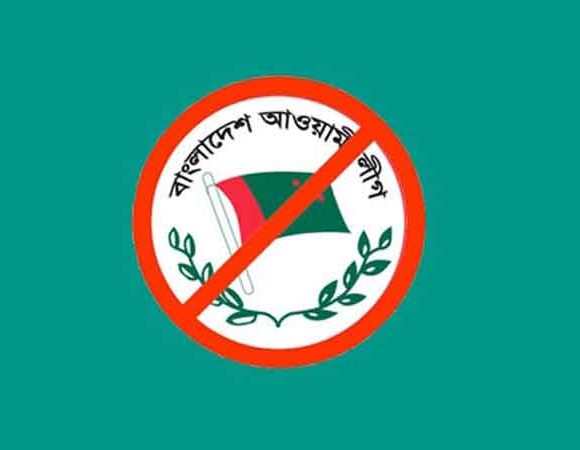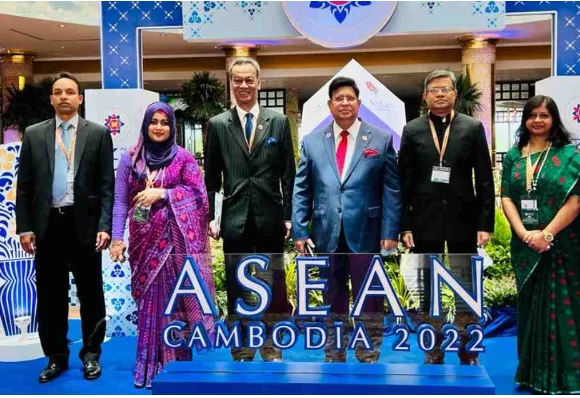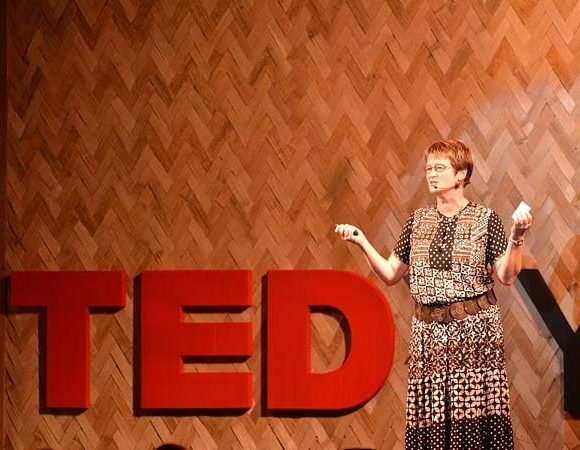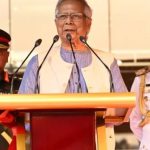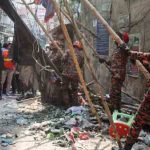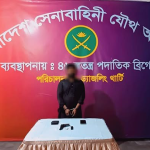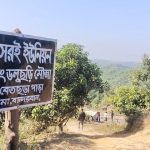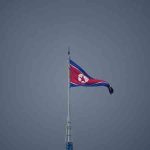New evidence shows how Myanmar’s military planned the Rohingya purge
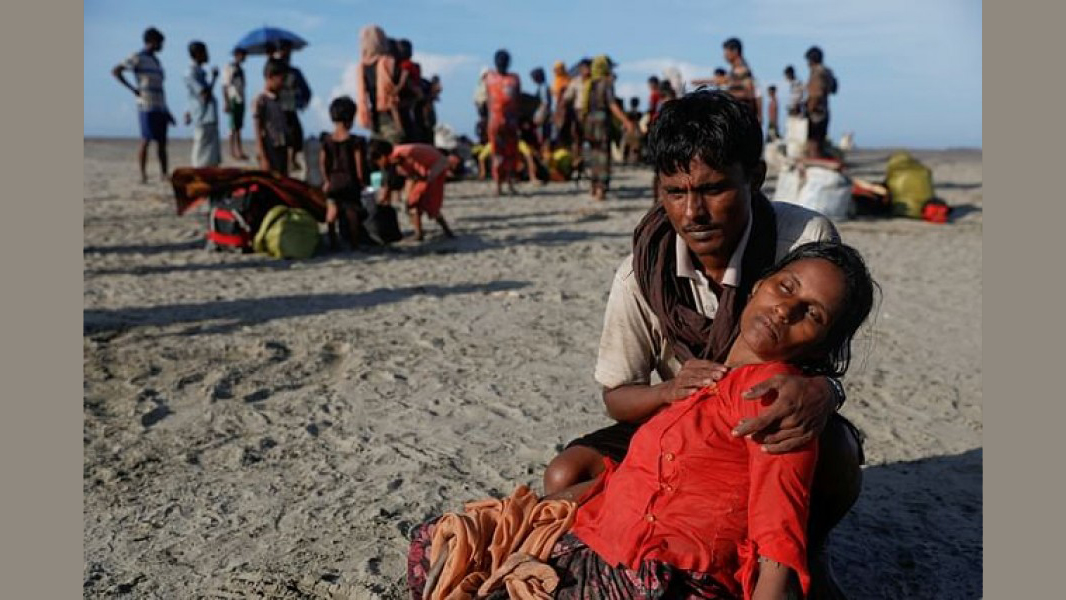
NEWS DESK
In mid-2017, in a remote area of Myanmar, senior Burmese military commanders held secret talks about operations against the minority Rohingya Muslim population. They discussed ways to insert spies into Rohingya villages, resolved to demolish Muslim homes and mosques, and laid plans for what they clinically referred to as “area clearance”, reports Reuters.
The discussions are captured in official records seen by Reuters. At one meeting, commanders repeatedly used a racial slur for the Rohingya suggesting they are foreign interlopers: The “Bengalis,” one said, had become “too daring.” In another meeting, an officer said the Rohingya had grown too numerous.
The commanders agreed to carefully coordinate communications so the army could move “instantly during the crucial time.” It was critical, they said, that operations be “unnoticeable” to protect the military’s image in the international community.
Weeks later, the Myanmar military began a brutal crackdown that sent more than 700,000 Rohingya fleeing to Bangladesh. Ever since, the military has insisted the operation was a legitimate counter-terrorism campaign sparked by attacks by Muslim militants, not a planned programme of ethnic cleansing. The country’s civilian leader at the time, Nobel Peace Prize laureate Aung San Suu Kyi, dismissed much of the criticism of the military, saying refugees may have exaggerated abuses and condemnations of the security forces were based on “unsubstantiated narratives.”
But official records from the period ahead of and during the expulsion of the Rohingya, like the ones in 2017, paint a different picture.
The records are part of a cache of documents, collected by war crimes investigators and reviewed by Reuters, that reveal discussions and planning around the purges of the Rohingya population and efforts to hide military operations from the international community. The documents show how the military systematically demonised the Muslim minority, created militias that would ultimately take part in operations against the Rohingya, and coordinated their actions with ultranationalist Buddhist monks.
For the past four years, these war crimes investigators have been working secretly to compile evidence they hope can be used to secure convictions in an international criminal court. Documents spanning the period 2013 to 2018 give unprecedented insight into the persecution and purge of the Rohingya from the perspective of the Burmese authorities, especially two “clearance operations” in 2016 and 2017 that expelled about 800,000 people.
The documents were collected by the Commission for International Justice and Accountability (CIJA), a nonprofit founded by a veteran war crimes investigator and staffed by international criminal lawyers who have worked in Bosnia, Rwanda and Cambodia. Beginning work in 2018, CIJA amassed some 25,000 pages of official documents, many related to the expulsion of the Rohingya, who since fleeing their homes have been languishing in squalid refugee camps in Bangladesh with little hope of returning. Some of the documents relate to military actions against other ethnic groups in Myanmar’s borderlands. The group’s work has been funded by Western governments.
CIJA allowed Reuters to review many of the documents, which include internal military memos, chain-of-command lists, training manuals, policy papers and audiovisual materials. Some documents contained redactions, which the group said were necessary to protect sources. The organisation also asked Reuters not to disclose the location of its office for security reasons.
‘MASS REMOVAL PROCESS’
The documents do not contain orders explicitly telling soldiers to commit murder or rape – such smoking-gun records are rare in the field of international justice. But key in the CIJA cache is the evidence of planning, said Stephen Rapp, a former US ambassador-at-large for war crimes issues who now sits on CIJA’s board. “Everything in it points to this intention to engage in this kind of mass removal process,” he said.
Through interviews with former Burmese soldiers, Rohingya and Rakhine civilians and ex-government officials, and a review of social media and official statements, Reuters was able to independently corroborate many details in the documents.
Myanmar’s military junta didn’t respond to questions from Reuters.
The cache illustrates the obsession authorities had with reducing a population they viewed as an existential threat.
In a private meeting with officials in Rakhine, which CIJA said was held around the time of the 2017 expulsion, the then-army chief and current junta leader, Min Aung Hlaing, told the Buddhist population to remain in place, and pointed to a demographic imbalance between Rohingya and the rest of the Rakhine population, the documents show.
Some of the officers who spearheaded the Rohingya expulsion and whose names appear in the documents have since been promoted.
Rohingya, who are mostly Muslim, trace their roots in Myanmar’s Rakhine area back centuries, a reading of history supported by independent scholars. While they now comprise a slim majority in the north of Rakhine state, they are a minority overall compared to the ethnic Rakhine, a mostly Buddhist group. Nationalists from the country’s Buddhist majority see the Rohingya as illegitimate migrants from neighbouring Bangladesh.
The August 2017 pogrom was carried out with a ferocity that stunned the world. Refugees described massacres, gang rapes and children thrown into raging fires. The nonprofit Médecins Sans Frontières estimated at least 10,000 people died. Hundreds of Rohingya villages were burned to the ground. In March this year, the United States formally declared that the military’s actions amounted to genocide.
Many in Myanmar, where about 90% of people are Buddhist, supported the military, which denied committing atrocities and said the Rohingya had burned their own homes. Burmese rallied around Suu Kyi, whose political party came to power in 2015 after half a century of military rule, as she dismissed reports of atrocities as an “iceberg of misinformation.” In 2019, she went to the Hague to defend Myanmar against charges of genocide at the International Court of Justice (ICJ).
But the military early last year toppled the democratically elected government under Suu Kyi, who has been detained since her overthrow. The coup has altered views in Myanmar and opened an unexpected window on the 2017 atrocities. After the military seized control, the country plunged into worsening civil war, as new armed resistance groups joined forces with existing ethnic armed actors in an effort to topple the junta. More than 2,000 civilians have been killed by the army, according to the rights group Assistance Association for Political Prisoners.
The public outrage over the coup and the killings has led to mass defections in the military. Some soldiers are now shedding light on the army’s practices for the first time.
LOOTING OF VILLAGES
One soldier, Captain Nay Myo Thet, told Reuters he was in Rakhine in 2017, where he said he was involved in logistical support, including transport and supplies, for the military. He described the looting of Rohingya villages after they were emptied. Soldiers took cattle, furniture and solar panels the Rohingya used to power their homes. Large items were loaded onto trucks, under the watch of a senior officer, he said. He was tasked with catching three goats belonging to Rohingya for a dinner party for the troops, he said.
Nay Myo Thet said he deserted in November and fled to a neighbouring country.
While the Burmese military faces grave allegations under international law, there is no easy road to convictions. Myanmar hasn’t signed the Rome Statute that created the International Criminal Court (ICC), which has the power to try individual perpetrators for international crimes. As a result, the United Nations Security Council would typically have to refer allegations against Myanmar to the ICC. Such a move would likely be blocked by allies of Myanmar, say international law experts.
But other paths to trial exist. The ICC set a legal precedent in 2019 by allowing its chief prosecutor to begin investigating crimes against the Rohingya population, including deportation, because they fled to Bangladesh, which is a party to the court.
Also in 2019, majority-Muslim Gambia brought a case against Myanmar for genocide at the ICJ, on behalf of the 57 member states of the Organization of Islamic Cooperation. In July, the court cleared the case to proceed, rejecting objections filed by Myanmar.
The non-profit Burmese Rohingya Organisation UK also filed a lawsuit against both Min Aung Hlaing and Suu Kyi in Argentina under “universal jurisdiction,” a legal principle that allows brutal acts to be tried in any court in the world. A spokesman for Suu Kyi’s party said at the time that such a case would violate Myanmar’s national sovereignty.
Legal experts say the chances senior military leaders will be tried soon are slim. They rarely leave Myanmar, and then only to friendly nations like Russia and China, which aren’t parties to the ICC.
Min Aung Hlaing didn’t respond to questions sent to the military junta. Reuters was unable to contact Suu Kyi, who in June was moved from an undisclosed location where she had been held to solitary confinement in a prison in the capital Naypyitaw, the junta said.
A spokesman for the newly formed civilian parallel government, which includes members of the former democratically elected administration who have escaped arrest, said it was their view that the Rohingya “were the victims of genocide.” It was of “dire importance,” the spokesman added, that the evidence of atrocities be presented to the ICJ.
CIJA has had success securing some convictions in tough environments. In Syria and Iraq, its investigators smuggled out more than a million pages of documents that implicated insiders from the Bashar al-Assad regime and Islamic State. The documents formed the basis of convictions in Germany and the Netherlands, including of a former Syrian regime member and an Islamic State militant, who are both now in prison.
CIJA has begun handing its Myanmar material to prosecutors in the Hague. The organisation says the records implicate more than a dozen Burmese officials, most in the military. CIJA asked Reuters not to publish most of their names to ensure any future legal proceedings aren’t jeopardised.
Bill Wiley, the Canadian founder and director of CIJA, says he is confident the Myanmar material will help with prosecutions. “If anyone’s ultimately convicted of genocide, it’s going to be based on the CIJA-collected materials,” he told Reuters.
Wiley, a veteran of the Rwanda and Yugoslavia war crimes tribunals, is a former Canadian military officer. In his office, cloaked in a cloud of cigar smoke, Wiley, who is 58, recalled being contacted by Canadian officials at the height of the Rohingya exodus.
The foreign minister at the time and current deputy prime minister, Chrystia Freeland, set up a working group of people from different government departments to tackle the crisis, he said. The brief was to “do something,” Wiley said. Because Canada helped fund CIJA in Iraq and Syria, the group asked him if he could replicate the model in Myanmar. Freeland’s office confirmed the account but declined to comment further.
This time, though, different methods were needed. In the early days of the Syrian uprising, CIJA had its investigators follow anti-Assad rebels as they took over government outposts. Their goal was to sweep up documents left behind by defeated forces. In Myanmar, though ethnic rebels were battling the military, such opportunities were few because the rebels weren’t taking control of large swathes of territory. The focus was on working with insiders willing to leak information and documents.
BUREAUCRACY OF REPRESSION
The Rohingya have long faced crushing discrimination and have had their citizenship rights stripped away. In the 1990s, authorities stopped issuing birth certificates for their children. Rohingya were forced to seek permits to marry or leave their villages. They had restricted access to university and were barred from holding government jobs. They were banned from having children out of wedlock, and married couples were barred from having more than two children.
The CIJA documents provide a snapshot of this bureaucracy of repression, including the creation in 2013 of a new Border Guard Police, a force charged with preventing “the dominance of Indians and Bengalis.”
This new force was to be given upgraded weapons and vehicles to prevent immigration and implement “response plans in times of crisis,” according to a 2014 document from a military-controlled department. The border police were also to enforce “population control activities” against the Rohingya and conduct an educational campaign that would “increase public knowledge about the danger of migration movement of Indians and Bengalis.”
The 2014 document emphasised the role of militias in various villages populated by taingyintha, members of officially recognized ethnic groups in Myanmar. These militias would serve as “the pillars for providing security to local ethnic people and the prevention of illegal immigration.”
The document advocates for a “national project” that would push “Bengalis” who want to avoid inspection by the authorities to leave the country. It calls for a campaign resembling an operation in 1977 that drove out hundreds of thousands of Muslims. Such an operation “should be implemented as before, when the rise of ethnic mixing is detected,” the document says.
An opportunity to implement these plans presented itself in the early hours of Oct 9, 2016. A group of Rohingya overran several border guard posts in northern Rakhine state, killing nine police officers. The army sealed off the area and began hunting the attackers.
Nay Myo Thet, the soldier who deserted, said he and others in his battalion were told they were conducting “clearance operations” in Rakhine. But their superiors didn’t give specific orders of what to clear.
They should have given the soldiers a target – “who was the leader, who were the followers, which weapons they had,” he said. The military cleared out entire populations, he added.
For months, security forces pillaged and burned villages across the north of Rakhine, according to human rights groups and the United Nations, which said about 70,000 Rohingya fled to Bangladesh in that purge. Security forces carried out killings and gang rape, according to a UN report.
In February 2017, the military declared the operations over. But hostility towards the Rohingya continued.
In July 2017, a group met in private to discuss operations in Rakhine, one record shows. Those present included Maung Maung Soe, the head of the Western Command, which had overseen the previous year’s crackdown, and Thura San Lwin, the head of the Border Guard Police. There were also commanders from the Military Operation Command-15 division and several local administrators.
One senior official said that at least 50% of the Rohingya population supported terrorism. A senior member of the security forces said Muslim villages were providing “protection” to militants.
Maung Maung Soe expressed frustration about the intelligence-gathering capabilities of the security forces in Muslim villages. A MOC-15 commander spoke about recruiting “kalars as spies and underlings” to obtain the latest news. “Kalar” is another racial slur for Muslims.
In the end, the group agreed to send health workers to villages to gather “valuable information.” They also determined that the army’s actions needed to be concealed from the outside world.
Thura San Lwin and Maung Maung Soe didn’t respond to questions sent to the military junta.
‘AREA CLEARANCE’
At another meeting in August between a MOC-15 commander and local administrators, the commander complained there were too many Muslims living near a military detachment. The majority of “Bengali” villages had been “trained for terrorism,” the group concluded. They resolved to demolish their homes and mosques, according to one record.
Around this time, according to another record, national and state-level officials visited a group of ultranationalist Buddhist monks in northern Rakhine state, who told them “illegal migrant Bengalis” were killing ethnic people to occupy the region. One of the monks said action needed to be taken.
Thura San Lwin, the border guard police chief, told the monks that forces were deployed for patrols and would carry out “area clearance” in cooperation with the military, according to the document. He didn’t specify where the clearance would take place. The officials urged the monks and other locals to cooperate with the security forces and share information.
By mid-August 2017, hundreds of troops had been flown into northern Rakhine, including two elite Light Infantry Divisions, the 33rd and 99th. The military said publicly it was trying to stabilise the situation there and that Muslim attackers had killed both Rakhine and Muslim villagers. Reuters couldn’t confirm this.
In the early hours of Aug 25, some 30 police posts were attacked by Rohingya men across the north of Rakhine state, killing 12 members of the security forces, authorities said. The men were largely untrained and carrying mostly sticks, knives and homemade bombs, according to the UN. A group called the Arakan Rohingya Salvation Army (ARSA), which said it was seeking political rights for Rohingya, claimed responsibility for the attacks.
ARSA didn’t respond to a request for comment.
Nay Myo Thet and another member of the security forces told Reuters they were surprised by the army’s disproportionate response to what they said were small and poorly organised attacks compared with insurgencies conducted by well-equipped militias in other parts of the country.
A log of army activities compiled by military authorities and obtained by CIJA records 18 attacks that morning by “Bengali insurgents,” starting with several explosions from handmade bombs. The log doesn’t record the deaths of any members of the security forces, though it does say militants killed Rohingya informers and several Rakhine civilians.
The next morning, the burning of Rohingya villages began. The log describes “arson attacks” in the Rakhine township of Maungdaw, with lists of houses, shops, mosques and Arabic language schools destroyed. Hundreds of houses are recorded as burned after “a fire broke out.” The arson continued for weeks. More than 7,000 structures are recorded in the log as having been burned to the ground between August 25 and mid-September. Sometimes the arson is ascribed to “Bengali insurgents.” Sometimes no perpetrator is listed.
Moe Yan Naing, a police captain who was stationed in Rakhine, told Reuters there were no attacks by ARSA after August 25, but his superiors ordered him and his colleagues to burn villages. There were many dead bodies in the villages, said Moe Yan Naing.
“The troops shot into the village before entering,” he said, referring to the village of Inn Din, where Reuters uncovered a massacre of civilians. “They shot and killed whoever they found in the village.”
Moe Yan Naing was the police captain who testified in the 2018 trial of Reuters journalists Wa Lone and Kyaw Soe Oo, who were arrested after they uncovered the killings in Inn Din and spent 511 days behind bars. Moe Yan Naing undercut the official narrative in court, saying that the two reporters had been set up by the authorities. He fled the country after the coup, fearing arrest by junta forces.
Approximately 392 villages were either partly or completely destroyed, largely by fire, according to UN investigators, who blamed the arson on the Myanmar security forces and local Rakhine residents. This amounted to 40% of all villages in northern Rakhine state.
Army chief Min Aung Hlaing travelled to northern Rakhine around the time of the expulsion of the Rohingya, CIJA said. A CIJA document records previously unreported comments he made to officials in Rakhine during his trip. He ordered non-Rohingya locals to remain in their homes “instead of leaving,” referring to a large discrepancy in population size between Muslims and other ethnic groups in Rakhine. He told the audience he understood they “do not want to keep Bengali villages near.”
During the expulsion of the Rohingya, troops were given instructions to delete photos that might be incriminating, said Nay Myo Thet. He and Moe Yan Naing, the former police captain, said security force members placed machetes beside the bodies of dead Rohingya and took photographs so it would look like they were insurgents.
Sensitive orders from senior commanders were given by phone rather than in writing, said Nay Myo Thet.
FEAR OF INTERVENTION
Documents in the CIJA cache show how the military feared international retribution over the Rakhine operation. A 2018 presentation that CIJA said was shown in officer training sessions assessed the possibility of foreign intervention triggered by an invocation of the UN’s “Responsibility to Protect” doctrine. R2P, as it’s known, has been used to support international intervention in countries where rulers are committing atrocities.
If R2P comes to Myanmar, the country will become “a failed state,” reads one slide. The presentation concluded that international uproar over the military operation was creating “excessive pressure” and that could “harm the sovereignty and territorial integrity of the country.”
A 2018 internal report by military authorities that assessed the Rakhine operation said the Rohingya had been “eager to take over” northern Rakhine. Muslim religious scholars in Myanmar, the report said, were trying to implement a plan for the world to become Islamic in the 21st century and were “recklessly” accelerating birth rates to increase the Muslim population. The authorities, it said, may have had trouble policing in Rakhine because “many Bengalis have similar facial resemblance with each other.”
The report points to democratic reforms in the country as having emboldened the Rohingya. Control over “extremist Bengalis” had weakened, the report said, when two Rohingya became members of parliament after power was transferred to a semi-civilian government following an election in 2010.
One of the two MPs, Shwe Maung, who had been critical of the authorities’ treatment of the Rohingya, has been in the United States since 2015 for fear of being arrested if he returns to Myanmar. His advocacy for the Rohingya in parliament had made him “a target,” he told Reuters.
Rohingya weren’t allowed to vote in the election that brought Suu Kyi to power in 2015, and Shwe Maung was barred from running.
Since the purge in Rakhine, some people named in the CIJA documents have been promoted. Among them is the former head of the 33rd Light Infantry Division, Aung Aung, who was promoted to head the Southwestern Command, according to local media. Border Guard Police chief Thura San Lwin was transferred to a top police post in the capital Naypyitaw, according to local reports.
Aung Aung didn’t respond to questions from Reuters.
A United Nations body also has been gathering evidence about the military’s actions in Rakhine, and since the coup has expanded its work to cover the junta’s actions. In March, the UN said the army’s actions since seizing power – including extrajudicial killings, air strikes and arson in populated areas – could amount to war crimes and crimes against humanity.
CIJA wound down its Myanmar fact-finding operation in late April. Wiley said international criminal justice is a “long game,” but he believes CIJA has amassed “really good evidence.”
“We get convictions,” he added. “The challenge is arrests.”
The coup in Myanmar has begun to erode anti-Rohingya prejudices
Even as Rohingya poured into Bangladesh in 2017 bringing stories of mass killings and rape, many media outlets inside Myanmar echoed government propaganda, portraying the military crackdown as a legitimate campaign against “extremist Bengali terrorists.” Many Burmese also rallied behind the authorities in the face of allegations of ethnic cleansing and war crimes by the international community.
But long-held prejudices have begun to change in response to the military coup of early 2021 and the violence unleashed by the junta as it tried to quell growing resistance across the country – violent repression usually reserved for ethnic areas. Many Burmese have apologised on social media for ignoring the plight of minorities.
One academic study of social media posts after the coup found perceptions towards minorities, including the Rohingya, had shifted. While Rohingya activists say anti-Muslim sentiment persists in Myanmar, the study found there were fewer negative posts and more voices pleading for an inclusive society.
Sasa, a spokesman for the newly formed civilian parallel government, said it was only after the coup that “the people have come to understand and accept the true nature of the military, and their unfathomable disregard for human rights.”
Sasa, who goes by one name, added: “Those who previously doubted the military’s victims are eager to apologise.”
The military junta didn’t respond to questions from Reuters.
Some journalists who once toed the official line are expressing remorse over how they covered the purge in 2017. Moe Myint, an ethnic Rakhine journalist formerly with The Irrawaddy news website in Myanmar, told Reuters he travelled to Rakhine during the military crackdown but censored his reporting, in part for fear of a public backlash.
“I regret some situations,” said Moe Myint, who left Myanmar for exile in the United States after the coup, fearing he would be arrested as part of a media crackdown by the junta. “I had to consider my safety, and then I was unable to publish all the issues that happened in Rakhine state.”
In response to questions, an editor at the Irrawaddy said: “We are never reluctant to publish stories as long as they have been thoroughly verified and the reporter’s safety is not threatened.”
In September 2017, Moe Myint joined a tour organised by authorities to a village just outside Maungdaw town in Rakhine state where officials said several young Rakhine men had been killed by Muslims. He reported the killings in an article for The Irrawaddy, portraying them as the work of militants.
But later, he said, Rakhine villagers told him that the slain men were killed when they took part in a military-led assault on a Rohingya village. “Actually, we overlooked the situation,” he said. It was “quite clear that the military used” Rakhine residents to get information and “participate in military operations.”
He did not report this at the time, he said. It was difficult to verify information on the ground, he was wary of public opinion given strong anti-Rohingya sentiment, and his editors were reluctant to publish such information, he explained.
In December that year, he witnessed the aftermath of an attack by a mob of Rakhine people who had torn down a mosque and burned homes belonging to Rohingya in the village of Zay Di Pyin. A second reporter who was there, and spoke on condition of anonymity for fear of retribution, confirmed the account.
Moe Myint said the men destroyed the mosque, which was close to a police station, using heavy machinery. He snapped some photos of people taking bricks and other materials from the rubble and was leaving when a crowd surrounded him and his colleague.
“Some people were drunk and they shouted to kill us,” Moe Myint said. He and his colleague were handed over to the police, who detained them.
Though they were eventually released, Moe Myint said he was warned by a senior Rakhine politician that he should never talk publicly about what had happened.
“There are many untold stories,” he said.
How Reuters corroborated the Rohingya purge documents
The reporting for this article is based on material from thousands of pages of official records obtained by the Commission for International Justice and Accountability.
To verify details in the documents, Reuters reporters spoke to more than a dozen people with knowledge of the military’s operations in Rakhine, including former officials from Rakhine state, a member of parliament, locals in Rakhine and former members of the security forces. The reporters also cross-checked details in the documents against contemporaneous reports by state and local media and other material authored by authorities, including articles in an official magazine and books. They scoured social media pages to confirm details in the documents that appeared on the accounts of administrators and officials. One of the documents in the CIJA cache had been previously obtained by Reuters.
Not all details in the documents could be verified, including specific discussions that took place in private meetings between a tight circle of people ahead of the military crackdown in 2017.
Two former officials, however, confirmed that the kinds of meetings involving senior military commanders that are described in the documents took place. They confirmed key events and policies described in the documents, such as the formation of militias and cooperation between military officials and ultranationalist monks.
Former officials and members of the security forces interviewed by Reuters also confirmed the names and ranks of officials and military commanders who appear in the documents. For example, a defector from the Myanmar military confirmed the presence in the field during the 2017 military crackdown of a captain and a commander named in the documents; their names were not in the public domain. A former politician in Rakhine also confirmed that a meeting to discuss the Rohingya detailed in the documents between military officials and ultranationalist monks took place.
Reuters verified audiovisual material contained in the CIJA cache by matching unique elements that can be seen in the material with contemporaneous media accounts.
Former military and civilian officials confirmed the use by government and military officers of the Viber messaging app, which is mentioned in the documents.
Viber didn’t respond to a request for comment.
The reporters also corroborated the timeline for the implementation of key policies and events described in the documents. For example, an interview with a militia leader helped to confirm dates and other details about the formation of anti-Rohingya militias. The reporters also corroborated the deployment of mobile medical teams to Rohingya villages with a Rohingya village administrator and photos published in a military-authored book. According to the CIJA documents, these teams were meant to spy on the Muslim population while treating them.
Reporters cross-checked a log of military activities with information published by military-run media and satellite images showing when Rohingya villages were torched in Rakhine state. The number of burned buildings recorded in each village in the log aligned roughly with estimates put together by researchers who analyzed satellite imagery of the arson. A military defector confirmed that battalions mentioned in the log were present in Rakhine state at the time. The log also refers to the murder of several Rohingya administrators in a remote village; a Rohingya elder from that village confirmed the account.

